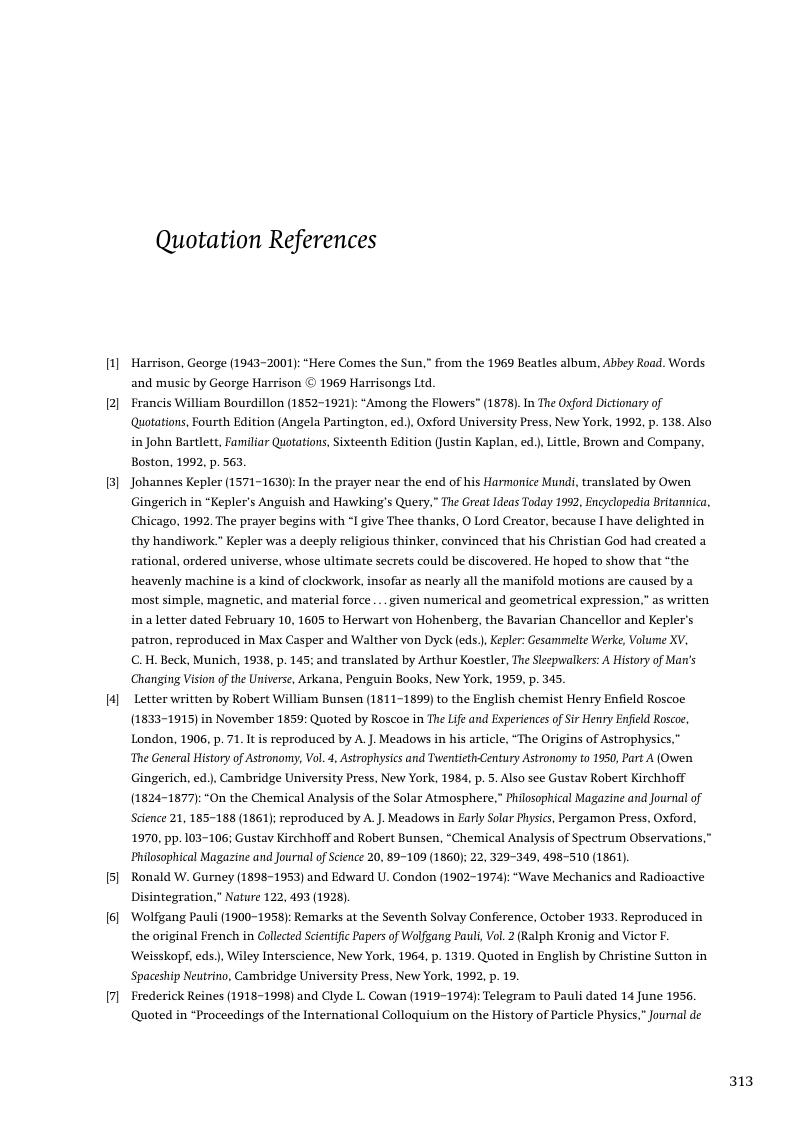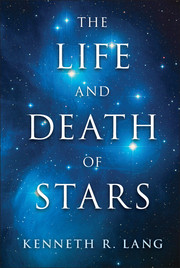Book contents
- Frontmatter
- Contents
- List of Focus Elements
- List of Tables
- Preface
- 1 Light of the Sun
- 2 Gravity and Motion
- 3 Atomic and Subatomic Particles
- 4 Transmutation of the Elements
- 5 What Makes the Sun Shine?
- 6 The Extended Solar Atmosphere
- 7 Comparisons of the Sun with Other Stars
- 8 The Lives of Stars
- 9 The Material Between the Stars
- 10 New Stars Arise from the Darkness
- 11 Stellar End States
- 12 A Larger, Expanding Universe
- 13 Birth, Life, and Death of the Universe
- Quotation References
- Author Index
- Subject Index
- Plate section
- References
Quotation References
Published online by Cambridge University Press: 05 February 2013
- Frontmatter
- Contents
- List of Focus Elements
- List of Tables
- Preface
- 1 Light of the Sun
- 2 Gravity and Motion
- 3 Atomic and Subatomic Particles
- 4 Transmutation of the Elements
- 5 What Makes the Sun Shine?
- 6 The Extended Solar Atmosphere
- 7 Comparisons of the Sun with Other Stars
- 8 The Lives of Stars
- 9 The Material Between the Stars
- 10 New Stars Arise from the Darkness
- 11 Stellar End States
- 12 A Larger, Expanding Universe
- 13 Birth, Life, and Death of the Universe
- Quotation References
- Author Index
- Subject Index
- Plate section
- References
Summary

- Type
- Chapter
- Information
- The Life and Death of Stars , pp. 313 - 316Publisher: Cambridge University PressPrint publication year: 2013



